5 ways to use Wishlist Reminders in your customer journey orchestration
Ever found yourself casually browsing your go-to online store just to look at what’s new or what’s on sale? Maybe you have a special occasion on the horizon, or perhaps payday is around the corner. Whatever the reason, hitting ‘Save to Wishlist’ is a crucial step in the buyer purchasing journey that many marketers are missing out on.
Updated on 10 Oct 2025
Not only do Wishlists store essential data for personalized eCommerce marketing journeys—clothing sizes, shoe sizes, and favored styles—but using this data to create Wishlist Reminders is a natural step towards increasing AOV and conversions for eCommerce stores.
Architect is Insider’s omnichannel journey orchestrator, built by marketers for marketers. It uses AI technology to create customer journeys based on customer behaviors, and one of Architect’s most popular releases enables marketing teams to remind customers of the items sat in their Wishlists to help move the customer journey along.
This article dives into the definition of wishlists and their importance in eCommerce. We’ll then inspire your marketing strategy with five compelling use cases to introduce Wishlist Reminders into your omnichannel customer journeys.
What is a Wishlist?
Most of us have been creating Wishlists from a young age. From birthday present lists as a child to wedding registries, most people are familiar with the concept of building a list of their favorite products that they would like to purchase or own.
This is the same concept in eCommerce, except the Wishlist is digital. Similar to a virtual shopping cart, a wishlist allows users to save items they are interested in, creating a convenient reference point for future consideration and potential purchase. This feature is crucial for stores looking to enhance user experience by providing a seamless way for shoppers to keep track of products they intend to buy without immediately committing to the purchase.
Why are wishlists important for eCommerce marketers?
Wishlists hold a crucial role in e-commerce strategy, offering a range of advantages that are highly valuable for marketers:
1. Reduce browse abandonment: Wishlists act as a safety net, allowing users to save products for future consideration. This can significantly lower browse and cart abandonment rates by providing a way for customers to revisit and complete their purchases later.
2. Enhance user engagement: By enabling customers to curate wishlists of products they’re interested in, Wishlists encourage customers to interact more frequently with your brand and products, and revisit your website.
3. Gather customer insights: Wishlists provide valuable insights into customer preferences and trends. With an omnichannel marketing platform like Insider, this data can then guide product recommendations, inventory management, and marketing strategies, leading to improved personalization and increased conversions.
4. Boost sales conversions: ECommerce sites with wishlists experience a conversion rate that is 21% higher compared to those without. Wishlists can guide customers toward purchasing decisions, effectively contributing to increased sales and revenue.
Check out our exclusive product tours
5 ways to improve eCommerce performance using Wishlist Reminders
Brands that effectively leverage Wishlist Reminders can transform their customer conversion and engagement metrics with tailored messaging. These reminders nudge customers into reviving their interest in saved items and creating a sense of urgency and exclusivity.
Here are five ways you can turn customers from passive browsers to loyal customers:
1. Boost revenue with back-in-stock Wishlist Reminders
Rooted in the principle of re-engagement and personalization, Wishlist Reminders reconnect customers with their saved items and nudge them toward a purchase.
Often, customers will save items to their Wishlist, only for them to later go out of stock. When those items come back in, you need to let the customers know.
For example: Imagine a customer has added a handbag to their Wishlist, not ready to commit to the purchase immediately. Two weeks and post-payday later, the customer finds the item is out of stock.
In the absence of reminders, this handbag could easily be forgotten, lost amidst numerous other bags and favorite items. However, with a strategic Wishlist Reminder Web Push, the item makes a timely reappearance on the customer’s desktop with a personalized push notification.
The message lets the customer know one of their favorite items is back-in-stock with an eye-catching photo, and uses timely messaging to stress urgency.
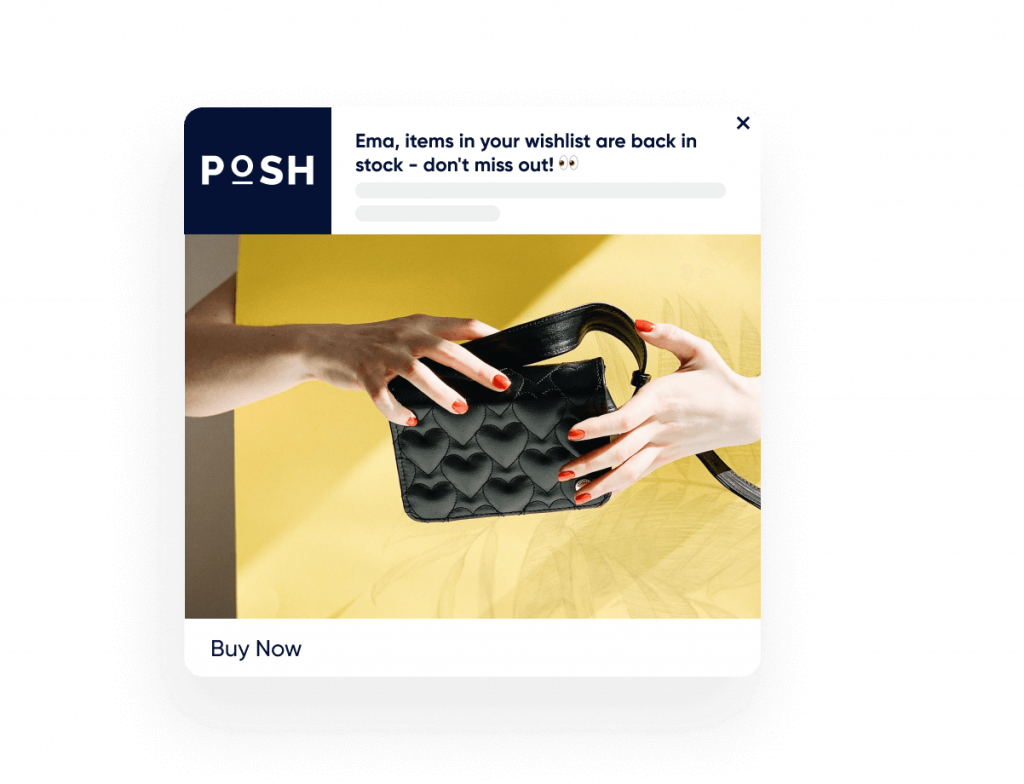
2. Increase customer lifetime value with price drop Wishlist Reminders
When it comes to gauging a brand’s long-term success, customer lifetime value (CLV) takes center stage. Boosting CLV is all about cultivating enduring relationships with customers, which is why price-drop Wishlist Reminders work.
These reminders aren’t just about triggering one-off purchases. Instead, each touchpoint with the customer brings added value and strengthens their trust in the brand. As these interactions multiply over time, they lead to repeat purchases, enhanced customer satisfaction, and rock-solid loyalty, boosting the CLV.
For example: Consider a situation where a customer falls in love with a high-end designer jacket on the site, but it’s a bit out of their budget. Instead of walking away, they add it to their Wishlist. Now, it’s time for Wishlist Reminders to kick into action.
When the jacket’s price takes a dip a few weeks later, the brand sends a personalized email to notify the customer. The message puts the jacket back on the customer’s radar, showing them that the brand is paying attention to their budget constraints. Touched by this level of personalized care and thrilled about the price drop, the customer buys the jacket, cementing their bond with the brand.
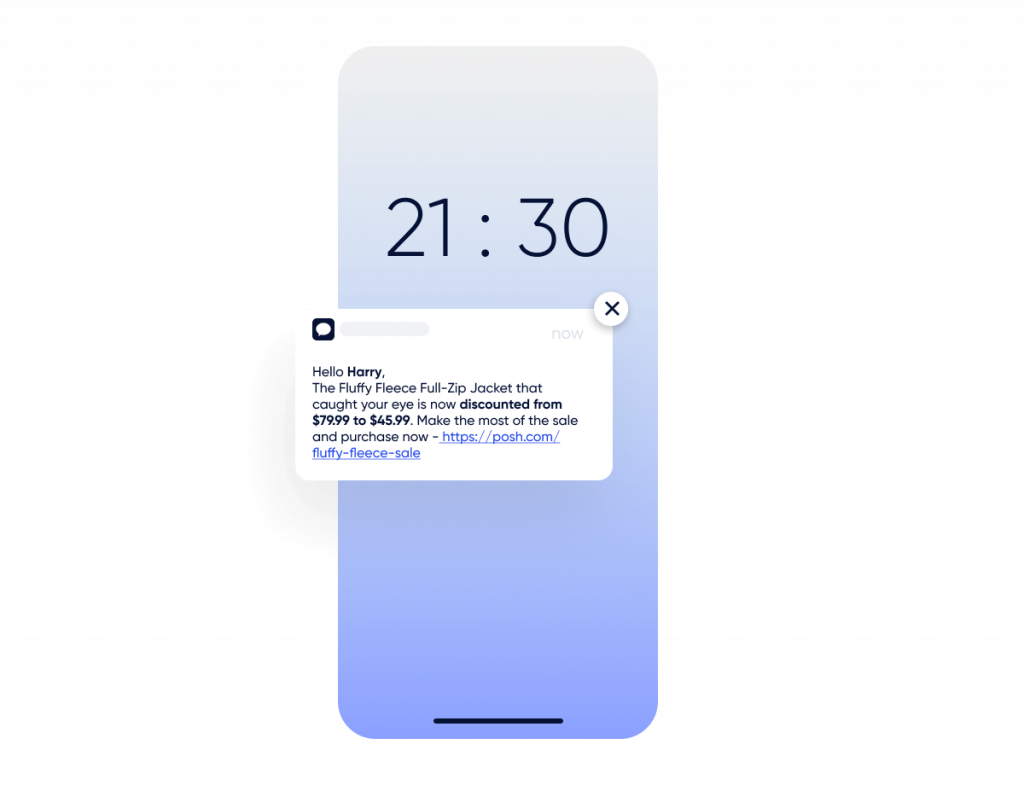
3. Increase purchase frequency with discounts and cross-sells
Wishlist Reminders are an enticing tool for brands to encourage purchases by presenting customers with special deals or discounts. By aligning discounts with customers’ Wishlist items, brands can foster enhanced engagement and inspire purchases more effectively.
For example:
Let’s imagine a customer has been eyeing a premium coffee machine in an online appliance store. They add the item to their Wishlist, indicating their interest, but the price prevents them from making a purchase immediately.
This is where a well-timed Wishlist Reminder comes into play. A week later, the customer receives an email notifying them of a special discount on the very coffee machine they’ve saved in their Wishlist. The reminder presents an irresistible offer.
The pull of the discount, coupled with their existing interest in the product, leads the customer to revisit the platform and complete the purchase—the strategy has converted a Wishlist item into a successful sale.
And the power of Wishlist Reminders doesn’t stop there. Seeing the success of this purchase, the brand can then follow up a few weeks later with another reminder—this time offering a bundle of coffee beans to go perfectly with their new machine.
By leveraging the customer’s purchase history and preferences, brands can recommend complementary products that enhance the value and enjoyment of their initial purchase.
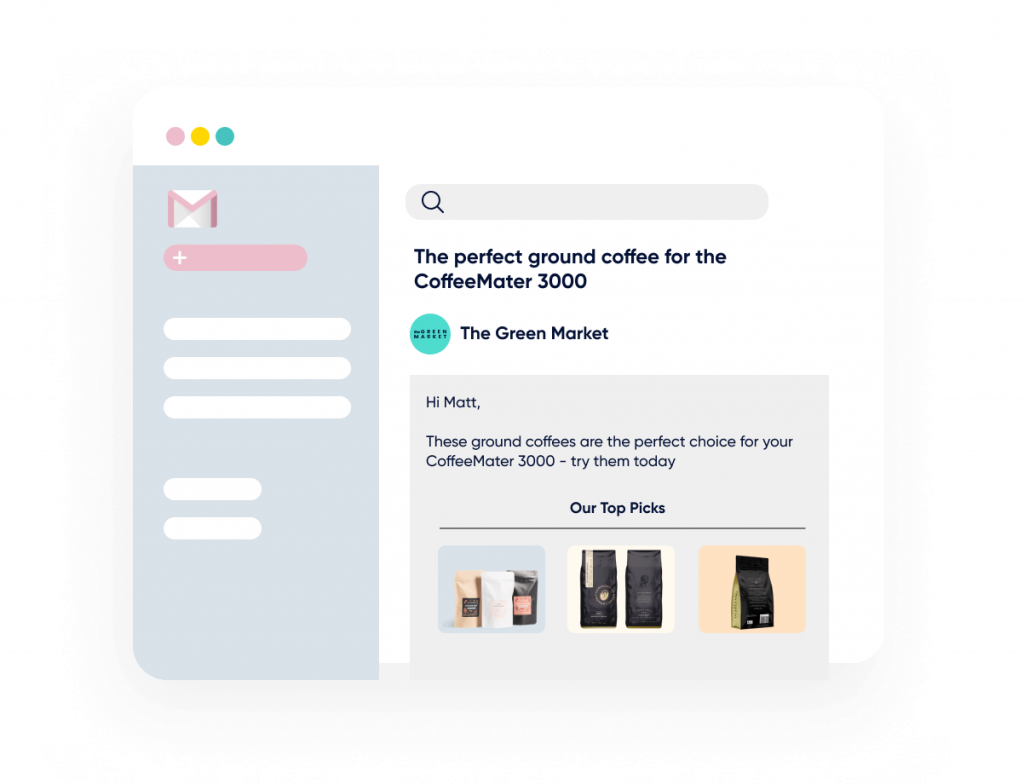
4. Accelerate the time to purchase with real-time back-in-stock Wishlist Reminders
Wishlist Reminders aren’t just to encourage the purchase itself—they can also act as an accelerator to decrease time to purchase. If a customer saved an out-of-stock item that has recently come back in, your Wishlist Reminder can push for urgency to make a sale ASAP.
For example: A customer is browsing your electronics store and finds the perfect high-end headphones they’ve been searching for, only to discover they’re currently out of stock. Disappointed but still hopeful, the customer adds the headphones to their Wishlist. If the retailer doesn’t have Wishlist Reminders, the customer will have to keep checking back for restocks. This causes delays and will likely prolong the purchase process or lead the customer to explore other retailers for the headphones.
However, a well-implemented Wishlist Reminder tool has the opportunity to transform this outcome. As soon as the headphones are back in stock, the tool immediately reminds the customer. This message creates a sense of urgency, notifying the customer that the item they want is available again, but they need to be quick because it’s likely to sell out quickly.
Reacting to this prompt, the customer swiftly returns to the platform and completes the purchase, reducing the time between initial interest and final purchase. The Wishlist Reminder not only secures a sale that could have been lost but also fosters a positive customer experience by keeping them informed and valued.
By providing timely, relevant updates, Wishlist Reminders expedite the purchasing process, encouraging customers to transition from ‘saving’ to ‘buying’ more swiftly.
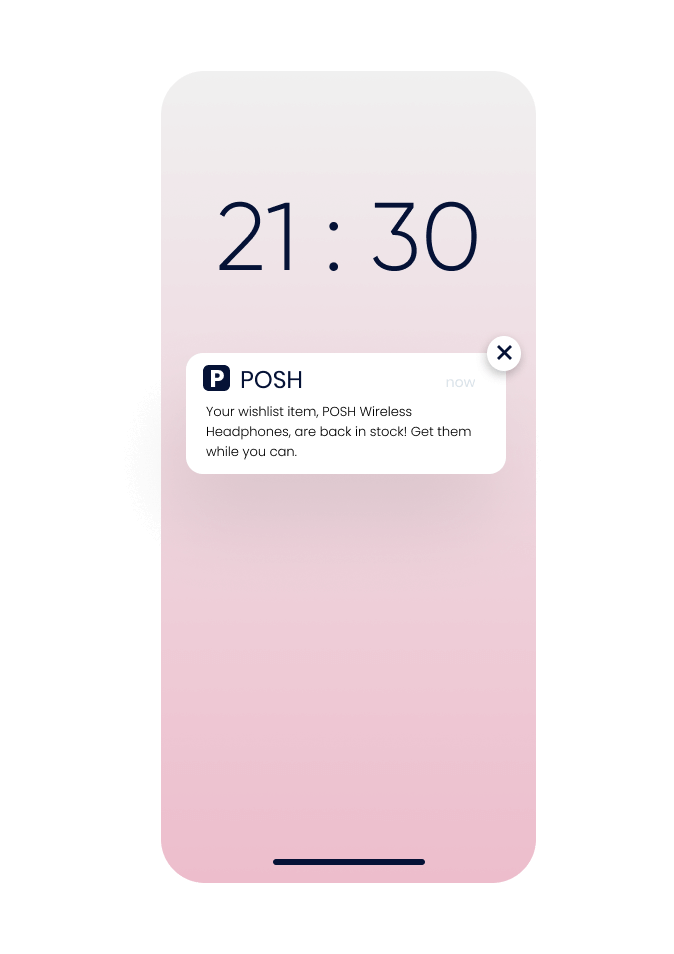
5. Omnichannel engagement to drive AOV
The strongest Wishlist Reminders aren’t confined to a single channel—they serve as a bridge that connects various touchpoints in the customer journey. By leveraging omnichannel engagement, brands can nurture customer interest in more premium and expensive products, ultimately driving up the average order value (AOV).
For example: A customer is browsing an online furniture store through a mobile app during their morning commute. They come across a luxurious sofa that catches their eye and add it to their Wishlist, but they decide to delay the purchase for now. As they exit the app and go about their day, the sofa slips their mind.
This is where omnichannel Wishlist Reminders come into play.
Later in the day, the customer checks their email and finds a personalized reminder about the sofa on their Wishlist. The reminder reintroduces the sofa and showcases up-sell recommendations, featuring more premium, luxurious sofas that align with the customer’s initial interest.
By presenting these higher-value options, the brand aims to nurture the customer’s interest in exploring more exclusive and expensive products, seamlessly transitioning them from mobile app browsing to email and web. This strategy enhances the overall shopping experience, promotes higher-value products, and ultimately increases the AOV, driving greater revenue for the brand.
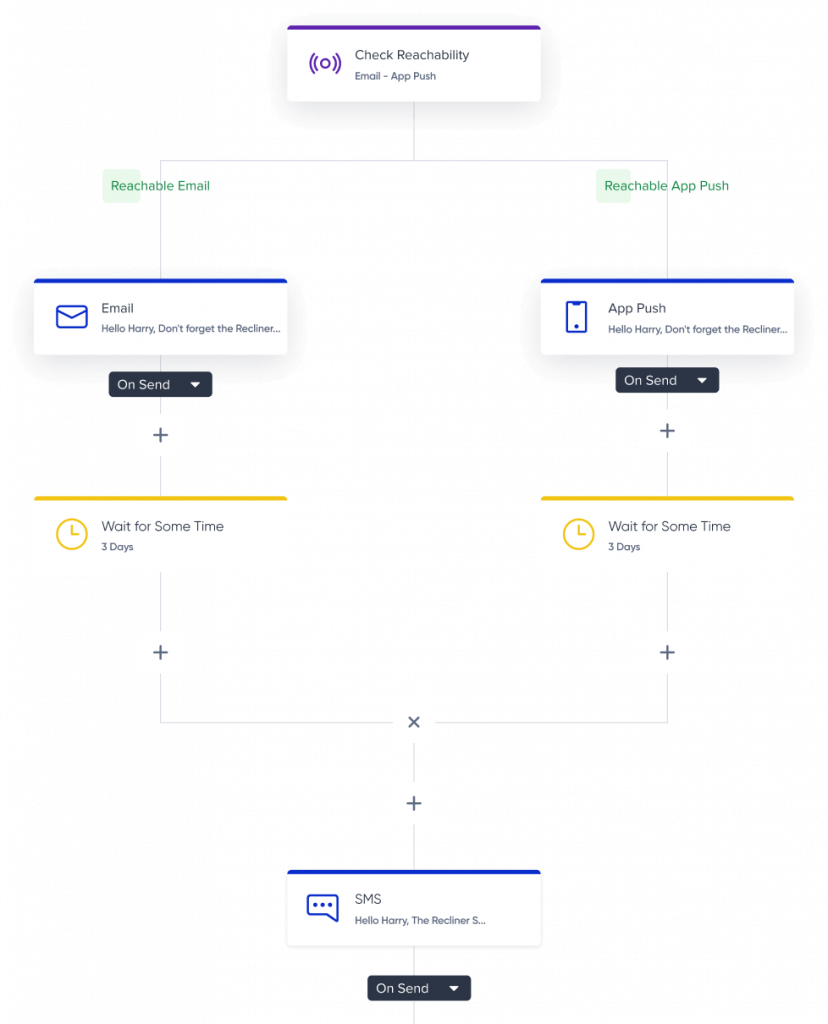
Incorporating Wishlist Reminders into your omnichannel customer journey with Architect
Architect’s Wishlist feature is more than just a tool for users to bookmark their desired products—it’s a strategic touchpoint in a customer’s journey. Users can save items for later, organize potential purchases, and get notified about updates regarding their Wishlist items. Through reminders and personalized messages, customers are encouraged to reengage, making Wishlists a crucial part of the conversion process.
Native integration
Architect’s Wishlist functionality is native, which means unlike other vendors, you don’t need to go through third-party tools or APIs. Insider has focused on a user-friendly, intuitive interface to make it as easy as possible to build omnichannel customer journeys and incorporate Wishlists into them.
Reminder messages
One of the standout aspects of Wishlists is the use of reminder messages across different channels, including emails, SMS, push notifications, and social media. As we’ve seen, these reminders can powered by user behaviors and preferences to determine the best time and channel.
Wishlist journey templates
To further enhance its Wishlist functionality, Architect offers a catalog of pre-approved templates for every use case—including Customer Journey Wishlist Templates. These templates can be filtered by industry, channel, and business goals, providing a starting point for brands looking to engage customers through Wishlist reminders.
Here’s a closer look at these templates:
- Price drop: This template is designed for scenarios when a customer has added a product to their Wishlist and its price changes. The reminder message informs the customer about the price drop, encouraging them to take advantage of the lower price and complete their purchase.
- Back in stock: This template is ideal for out-of-stock situations. When a previously out-of-stock product on a customer’s Wishlist becomes available, a ‘back in stock’ reminder message is sent to the customer, letting them know they can now purchase the item.
- Cart abandonment: Cart abandonment is the biggest challenge for eCommerce businesses. This template sends a reminder to customers who have added items to their cart but did not proceed to checkout.
- Cross-sell: This template takes advantage of the Wishlist’s insight into a customer’s preferences. If a customer has items on their Wishlist that pair well with other products, a cross-sell reminder could be sent suggesting complementary items.
- Wishlist post-purchase: Post-purchase engagement is crucial for fostering customer loyalty. This template sends a reminder about other Wishlist items after a customer makes a purchase.
Wait elements
With Architect’s Wait elements, you can set your Wishlist Reminder messages to wait for a predetermined amount of time before being triggered.
This gives your customers the autonomy to make purchases in their own time, and the feature also checks to make sure they haven’t made the purchase before sending a reminder message. This thoughtful approach allows businesses to strike a balance between helpful reminders and overbearing nudges, fostering a more customer-friendly shopping experience.
Get hands-on with Wishlist Reminders
ECommerce and retail success is now riding on a new wave powered by Wishlists. The question is—are you ready to catch that wave?
Explore Architect’s Wishlist feature firsthand in our Product Demo Hub, or for a more personalized experience, book a demo with a member of our team to walkthrough how Insider can help transform your omnichannel marketing strategy.
Wishlist Reminder FAQs
A wishlist is a curated list of products or items that users select to save for future reference or potential purchase on an eCommerce platform.
A Wishlist Reminder is a notification sent to users who have added items to their wishlist but haven’t yet made a purchase. It serves as a gentle nudge to encourage them to complete their intended purchase.
Wishlists are vital to eCommerce as they provide valuable insights into customer preferences and intent. Wishlist reminders help convert interested prospects into customers, driving sales and fostering engagement.
Wishlist reminders increase conversion rates by targeting users who have already expressed interest in specific products. They enhance user experience, reduce cart abandonment, and enable personalized engagement, ultimately boosting customer retention and revenue.



















